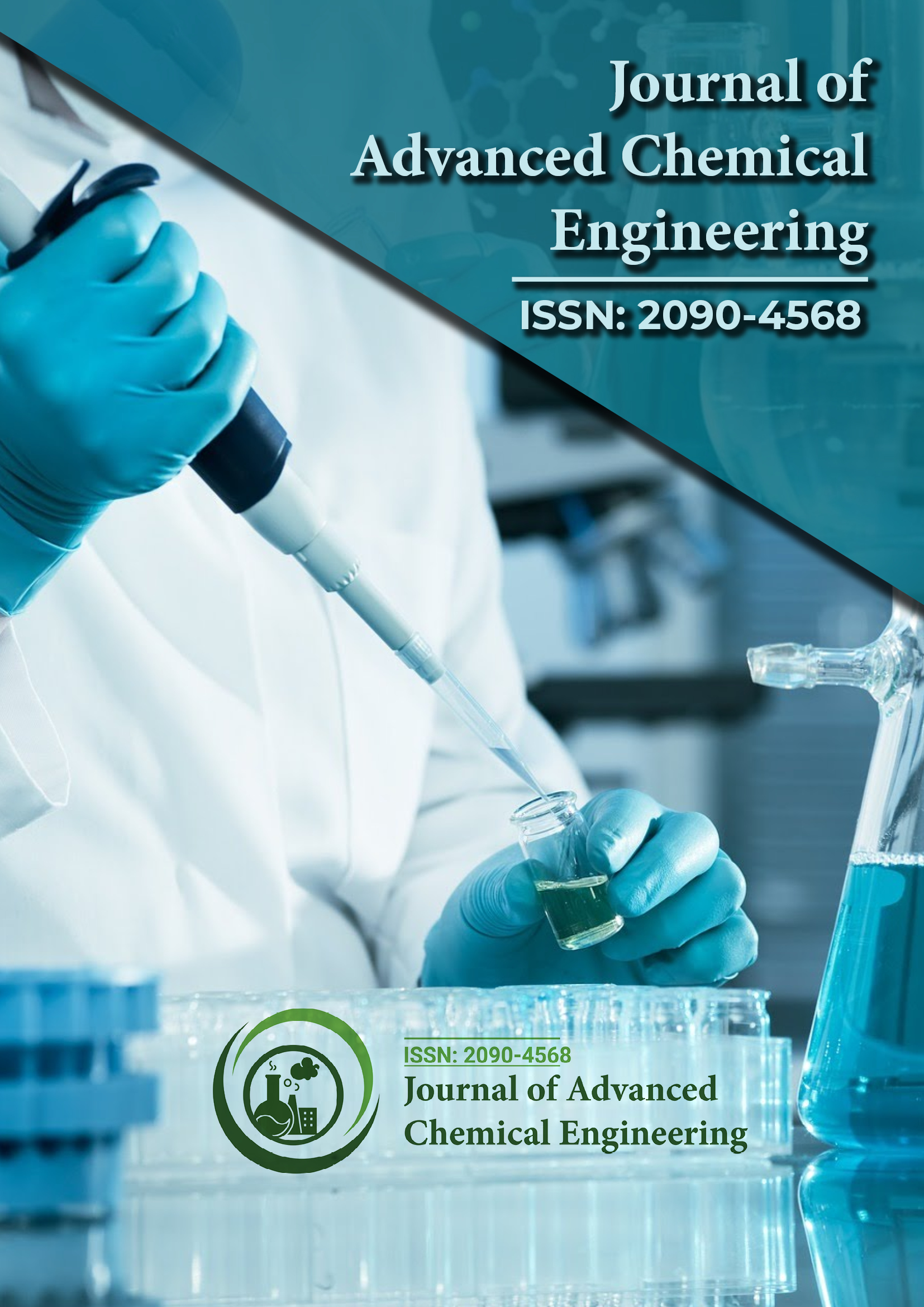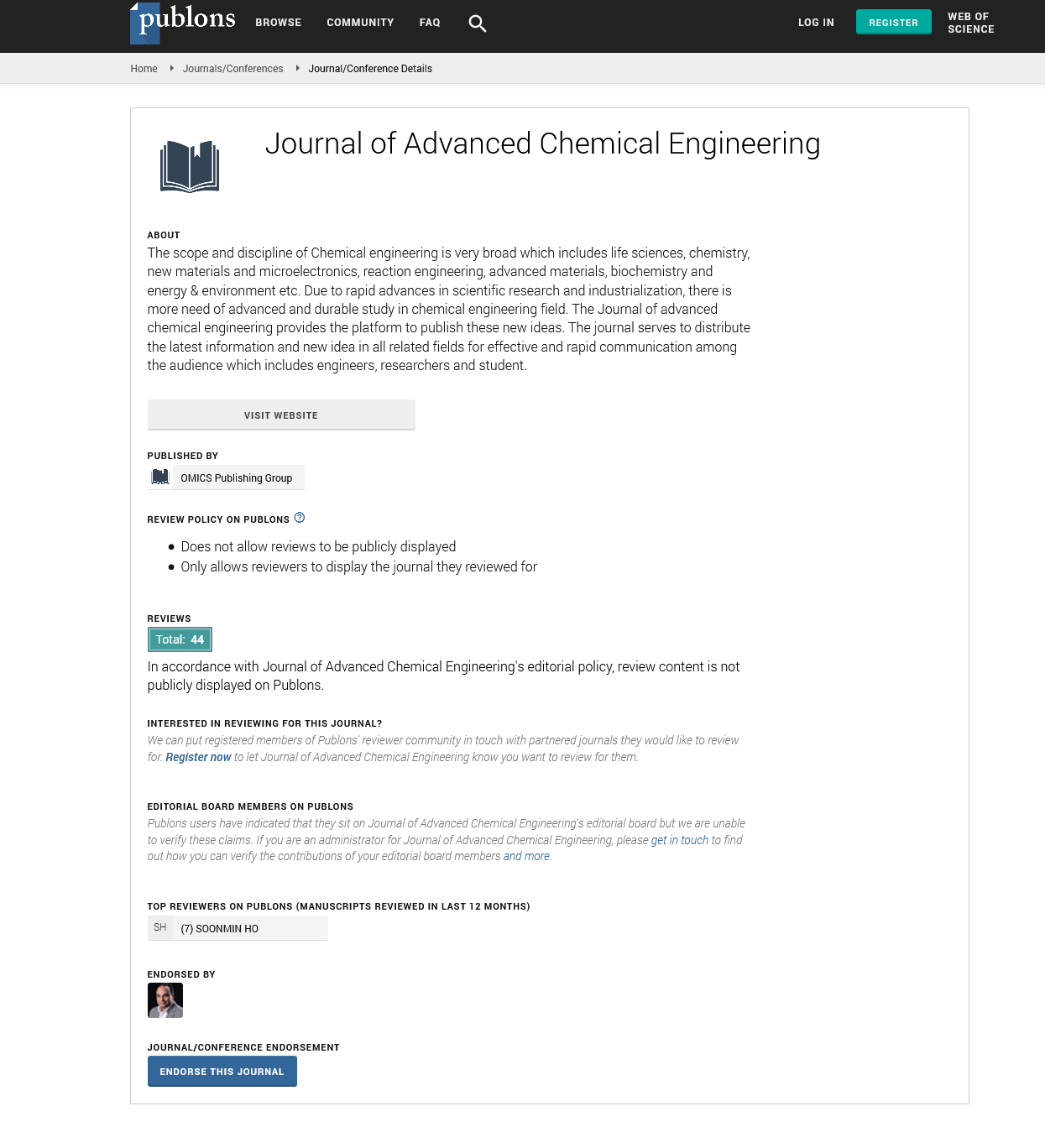Indexed In
- Open J Gate
- Genamics JournalSeek
- Smithers Rapra
- RefSeek
- Directory of Research Journal Indexing (DRJI)
- Hamdard University
- EBSCO A-Z
- OCLC- WorldCat
- Scholarsteer
- Publons
- Geneva Foundation for Medical Education and Research
- Google Scholar
Useful Links
Share This Page
Journal Flyer

Open Access Journals
- Agri and Aquaculture
- Biochemistry
- Bioinformatics & Systems Biology
- Business & Management
- Chemistry
- Clinical Sciences
- Engineering
- Food & Nutrition
- General Science
- Genetics & Molecular Biology
- Immunology & Microbiology
- Medical Sciences
- Neuroscience & Psychology
- Nursing & Health Care
- Pharmaceutical Sciences
Short Communication - (2024) Volume 14, Issue 3
Challenges in Engineering Non-Model Eukaryotes for Large-Scale Applications
Gabriel King*Received: 30-Aug-2024, Manuscript No. ACE-24-28339; Editor assigned: 02-Sep-2024, Pre QC No. ACE-24-28339 (PQ); Reviewed: 16-Sep-2024, QC No. ACE-24-28339; Revised: 23-Sep-2024, Manuscript No. ACE-24-28339 (R); Published: 30-Sep-2024, DOI: 10.35248/2090-4568.24.14.348
Description
The engineering of non-model eukaryotes for bioenergy and biochemical production has emerged as a promising alternative to traditional microbial systems, providing unique opportunities to tap into the vast biochemical diversity of nature. Non-model eukaryotes, including certain fungi, algae and protozoa, possess distinct metabolic pathways, resilience mechanisms and complex cellular structures that can be controlled for industrial applications. These organisms provide several advantages over well-established model organisms like Saccharomyces cerevisiae and Escherichia coli, which have been heavily optimized for biochemical production [1]. Non-model eukaryotes, by contrast, have the potential to reveal novel enzymes, metabolic routes and stress tolerance features that are important for optimizing bioenergy and biochemical production processes [2].
The versatility of non-model eukaryotes in bioenergy production is a key factor driving their growing importance. For example, algae are particularly well-suited for the production of biofuels like biodiesel, as they are capable of synthesizing high lipid content, which can be easily converted into fuel [3]. Similarly, fungi can be engineered to produce biofuels such as ethanol, butanol and even hydrogen, providing an alternative to traditional fuel sources [4,5]. Additionally, non-model eukaryotes can efficiently utilize a variety of feedstocks, including agricultural waste, carbon dioxide and lignocellulosic biomass, positioning them as highly sustainable alternatives for bioenergy production [6]. These organisms can produce biofuels in conditions that reduce the environmental impact compared to conventional petroleum-derived fuels, aligning with global goals to mitigate climate change and reduce dependence on fossil fuels.
Beyond bioenergy, non-model eukaryotes also hold great promise in biochemical production. Fungi and algae, for example, are known for producing a wide range of valuable biochemicals, including organic acids, terpenoids, proteins and polysaccharides. These bio-based chemicals are essential in industries such as pharmaceuticals, food production and cosmetics. By controlling advanced genetic engineering tools, such as CRISPR/Cas9 and synthetic biology approaches, researchers can manipulate the metabolic networks of these organisms with greater precision. The engineering of these nonmodel eukaryotes enables the optimization of biosynthetic pathways, increasing yield and reducing the costs associated with biochemical production [7]. Furthermore, the natural products synthesized by these organisms can serve as a rich source of novel compounds, which could open new avenues in drug discovery, particularly in the development of antibiotics, antivirals and other therapeutic agents.
However, while the potential of non-model eukaryotes is clear, several challenges remain in engineering these organisms for large-scale applications. A major obstacle is the limited availability of genetic tools and resources for many non-model eukaryotes. Unlike well-characterized organisms, these eukaryotes often lack efficient transformation methods, welldeveloped expression systems and pathway optimization tools. As a result, much of the research in this area remains in the developmental stages, requiring significant investment in technology development. Furthermore, non-model eukaryotes often exhibit complex life cycles and slower growth rates compared to model microorganisms, which complicates their cultivation and large-scale fermentation [8]. This makes optimizing the growth conditions and production rates more challenging, requiring interdisciplinary research to develop bioprocesses that can be scaled up effectively [9,10].
In conclusion, engineering non-model eukaryotes for bioenergy and biochemical production presents a promising path toward more sustainable and renewable industrial processes. By controlling the unique metabolic capabilities of these organisms, researchers have the opportunity to develop more efficient and environmentally friendly biofuels and biochemicals. While challenges remain in terms of genetic tool development and process optimization, ongoing research in this field is steadily advancing. As these hurdles are addressed, non-model eukaryotes are likely to play a important role in meeting the growing global demand for bio-based chemicals and renewable energy sources. Their ability to utilize diverse feedstocks and produce valuable metabolites positions them as key players in the transition toward a sustainable bioeconomy, contributing to the reduction of our reliance on fossil fuels and the promotion of more sustainable manufacturing processes.
References
- Ploessl D, Zhao Y, Shao Z. Engineering of non-model eukaryotes for bioenergy and biochemical production. Curr Opin Biotechnol. 2023;79:102869.
[Crossref] [Google Scholar] [PubMed]
- McCartney B, Dudin O. Cellularization across eukaryotes: Conserved mechanisms and novel strategies. Curr Opin Cell Biol. 2023;80:102157.
[Crossref] [Google Scholar] [PubMed]
- Kamla M, Sushil A, Karmal M. Nanotechnology: A sustainable solution for bioenergy and biofuel production. J Nanosci Nanotechnol. 2021;21(6):3481-3494.
[Crossref] [Google Scholar] [PubMed]
- Robles A, Sundar SV, Rangan SM, Delgado AG. Butanol as a major product during ethanol and acetate chain elongation. Front Bioeng Biotechnol. 2023;11:1181983.
[Crossref] [Google Scholar] [PubMed]
- Xue C, Zhao XQ, Liu CG, Chen LJ, Bai FW. Prospective and development of butanol as an advanced biofuel. Biotechnol Adv. 2013;31(8):1575-84.
[Crossref] [Google Scholar] [PubMed]
- James K, Wipat A, Cockell SJ. Expanding interactome analyses beyond model eukaryotes. Brief Funct Genomics. 2022;21(4):243-269.
[Crossref] [Google Scholar] [PubMed]
- Lo TM, Teo WS, Ling H, Chen B, Kang A, Chang MW. Microbial engineering strategies to improve cell viability for biochemical production. Biotechnol Adv. 2013;31(6):903-14.
[Crossref] [Google Scholar] [PubMed]
- Zhang H, Yun S, Song L, Zhang Y, Zhao Y. The preparation and characterization of chitin and chitosan under large-scale submerged fermentation level using shrimp by-products as substrate. Int J Biol Macromol. 2017;96:334-339.
[Crossref] [Google Scholar] [PubMed]
- Wowra K, Hegel E, Scharf A, Grünberger A, Rosenthal K. Estimating environmental impacts of early-stage bioprocesses. Trends Biotechnol. 2023;41(9):1199-1212.
[Crossref] [Google Scholar] [PubMed]
- Blöbaum L, Haringa C, Grünberger A. Microbial lifelines in bioprocesses: From concept to application. Biotechnol Adv. 2023;62:108071.
[Crossref] [Google Scholar] [PubMed]
Citation: King G (2024). Challenges in Engineering Non-Model Eukaryotes for Large-Scale Applications. Adv Chem Eng. 14:348.
Copyright: © 2024 King G. This is an open access article distributed under the terms of the Creative Commons Attribution License, which permits unrestricted use, distribution, and reproduction in any medium, provided the original author and source are credited.

